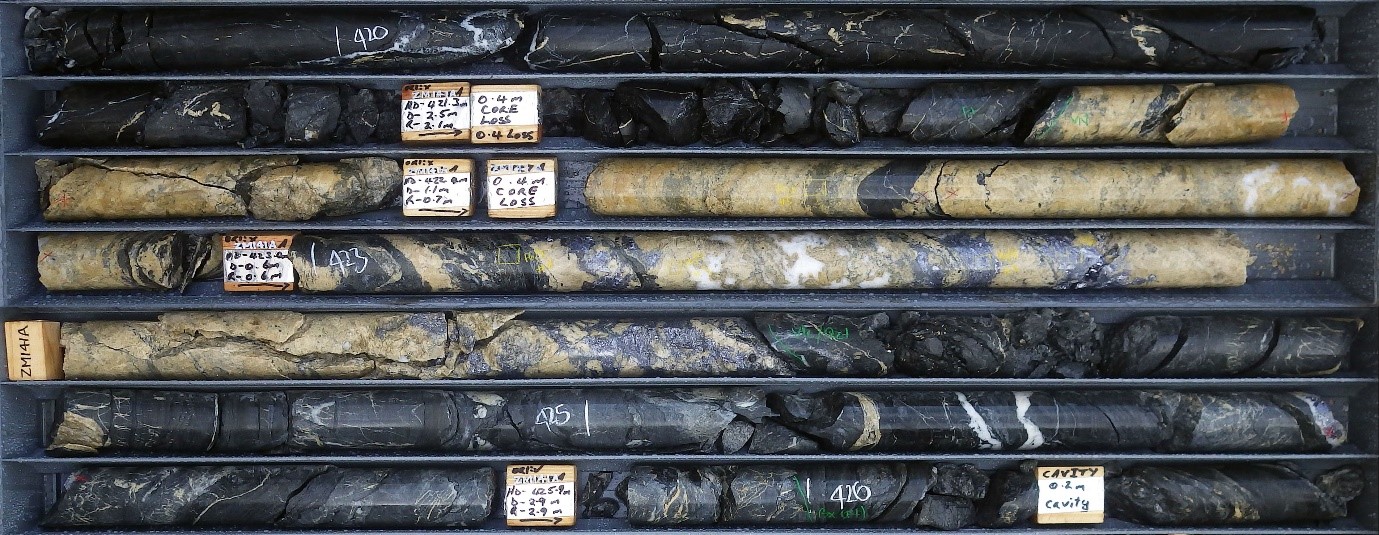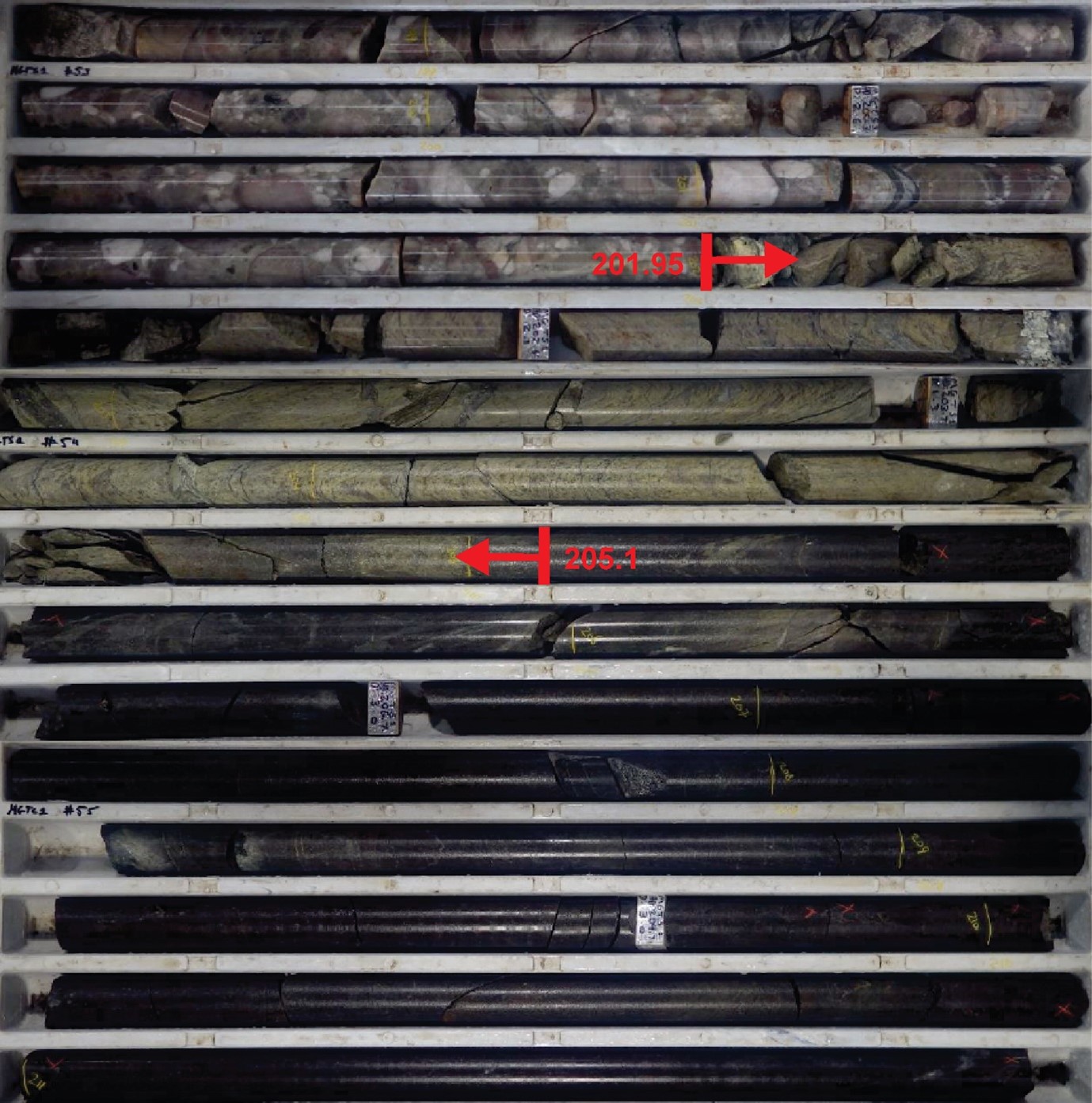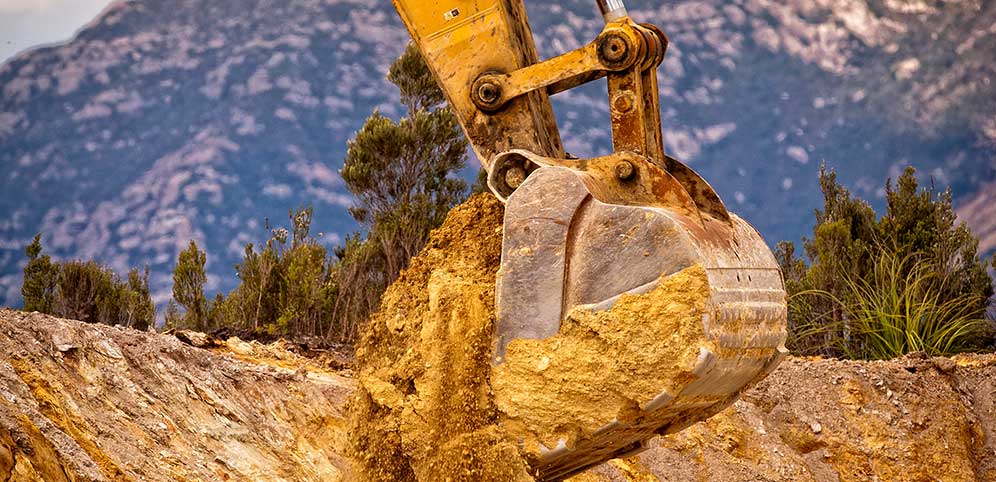Round 5 EDGI Results
First Release of Round 5 Data
Mineral Resources Tasmania released Final Reports from five Round 5 EDGI co-funded drilling projects.

The reports now being made Open File cover the following projects:
The Comstock project aimed to further evaluate the potential for a Renison style system at this prospect and follow up on encouraging results from Round 1 EDGI hole SY800. SY801 again intersected two zones of mineralisation, an upper structural Balstrup Fault zone and a deeper replacement zone. However, all assays from these intersections are sub-economic.
The EDGI projects at Zeehan were designed to test an exploration model of silver-lead-zinc base metal mineralisation, grading with depth, into pyritic cassiterite mineralisation, beneath four historic silver-lead mines.
At Montana No.1 mine mainly silver-lead-zinc mineralisation was intersected by hole ZM141A, with only minor zones of pyrite-cassiterite and it was concluded that the transition into dominantly tin mineralisation may still occur at depths greater than those tested.
Beneath the Zeehan Western mine hole ZW145 only intersected narrow silver-lead lodes, with no significant tin mineralisation.
At Queen No. 4 silver-lead mine, ZQ146 also tested for a down-dip transition to cassiterite mineralisation. Three narrow, low to moderate grade tin intervals were intersected. One aligns with the down-dip extension of the mine stopes, suggesting possible continuity with the lode. It is interpreted that the transition from base metal to pyrite hosted cassiterite mineralisation has almost fully occurred at the depth tested by ZQ146.
At the Oonah Mine two holes, spaced 100m apart, aimed to test for down-dip transitional cassiterite mineralisation, 50m below the known base metal and stannite resource. Both holes intersected fracture and breccia hosted, pyritic low-grade cassiterite dominant tin mineralisation. The company concludes a transition down-dip from stannite to cassiterite mineralisation is recorded in both holes.
Documents:
Second Release of Round 5 Data
Mineral Resources Tasmania released the final reports from three more round 5 EDGI co-funded drilling projects later in the year.

Gold mineralised contact zone in EDGI hole MGTS1 at Tin Spur (near Moina) between Roland Conglomerate and quartz-feldspar-biotite porphyry. Buff coloured sericite alteration hosts an intersection of 3.15 m at 3.3 g/t Au, 1.18% As between 201.95m and 205.1m.
The reports now being made Open File cover the following projects:
Cleveland (Tin, Copper, Lead, Zinc, Tungsten) – Holes C2120 to C2122 – Rockwell Minerals Pty Ltd
Balfour (Copper, Gold) – Hole DBBA1 - D&B Mining Pty Ltd
Tin Spur (Gold, Tin, Tungsten, Bismuth) – Hole MGTS1 – Moina Gold Pty Ltd
The Cleveland project targeted three holes at previously untested self-potential (SP) anomalies from a 1954 Bureau of Mineral Resources survey. The SP anomalies are located north-east along strike from the Cleveland tin mine, whose mineralisation was also detected by the survey. No significant mineralisation was intersected by the EDGI holes and the source of the SP anomalies is thought to be conductive Halls Formation black shales.
The Balfour project aimed to test the Murrays Reward lode about 200 m below existing drilling and the old mine workings. The hole intersected two major reef structures in the target area, with a zone of pervasive silicification extending below the lower reef. The first reef assayed 7.65 m @ 0.81% Cu, from 413.25 m to 420.9 m. The Second Reef was intersected from 457.8 m to 465.25 m but was almost barren, returning only 0.9 m @ 0.16% Cu from 460.1 m to 461.0 m. The hole is interpreted to prove the continuity, at depth, of the copper mineralised main lode structure at Murrays Reward mine.
The Tin Spur project, near Moina, targeted a 3D IP anomaly, adjacent to a Cambrian porphyry, in contact with Moina Sandstone. The hole intersected variably altered Moina Sandstone grading into basal Roland Conglomerate. Below the Roland Conglomerate the porphyry was intersected, with the upper three metres sericitized and hosting gold-bearing arsenopyrite vein mineralisation. The interval from 201.95 m to 205.1 m returned 3.15 m at 3.3 g/t Au and 1.18% As and is interpreted by the company to be the principal source of the IP anomaly.
Documents:
Company Report - Onshore 22_8623: Drilling report for - EDGI Round 5 - EL7/2005 Cleveland Project
